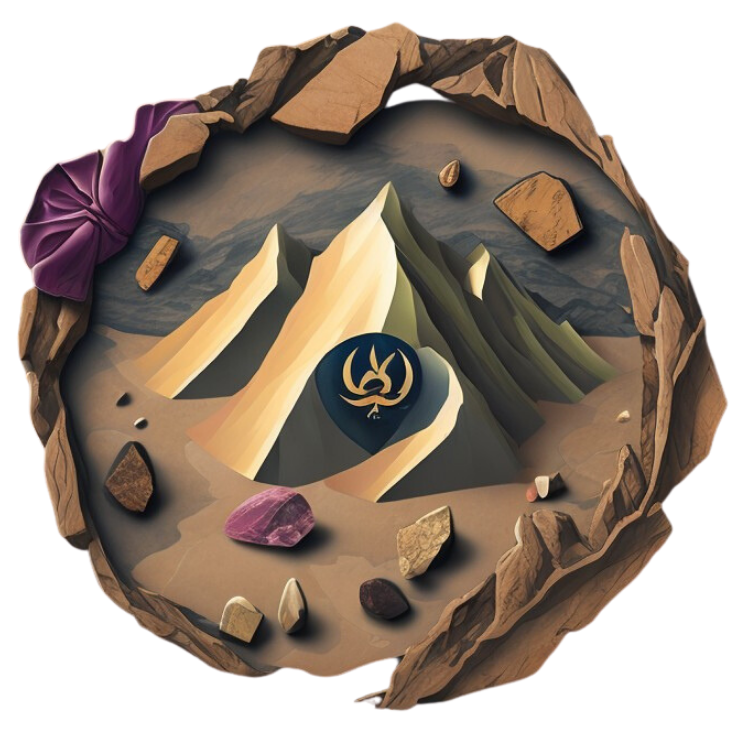Lapidary
What is Lapidary?
Lapidary is the art and science of cutting, polishing, and carving stones and gemstones. This practice has been around for centuries, with artisans transforming rough stones into beautiful, polished gems and intricate carvings. Lapidary skills are essential in the creation of jewelry, ornamental objects, and other decorative items made from gemstones and other minerals.
The field of lapidary encompasses several techniques and disciplines, including cutting, polishing, and carving. Each of these techniques requires precision, skill, and an understanding of the properties of the materials being worked with. Lapidary artists must know how to handle various types of stones, from soft, fragile materials like opals to hard, durable gemstones like diamonds.
This page serves as a comprehensive introduction to lapidary, exploring its various subfields, including cutting techniques, polishing methods, jewelry making, lapidary equipment, and gemstone treatment. Each section provides detailed information and resources for further exploration of these fascinating topics.
Cutting Techniques
Cutting is one of the most fundamental skills in lapidary, involving the transformation of rough stones into faceted gems, cabochons, or other desired shapes. Different cutting techniques are used depending on the type of stone and the desired final product.
Lapidary cutting can range from simple slab cutting, where large slices are cut from rough stones, to more intricate faceting, where a stone is cut into a precise geometric shape with multiple flat surfaces (facets) that enhance its brilliance. The tools used in cutting include saws, grinders, and faceting machines, each designed for specific types of cuts and materials.
Explore this section to learn about the various cutting techniques, the tools and equipment used in lapidary cutting, and tips for achieving the best results with different types of gemstones.
Polishing
Polishing is the process of refining a cut stone to bring out its natural luster and beauty. This stage of lapidary work involves using progressively finer abrasives to smooth the surface of the stone until it shines. The goal of polishing is to enhance the visual appeal of the stone, making it suitable for use in jewelry or other decorative items.
Polishing can be a delicate process, requiring careful control of pressure, speed, and the type of polishing compound used. Different stones respond differently to polishing, and lapidary artists must choose the appropriate techniques and materials for each type of stone.
In this section, you will explore the various methods of polishing stones, the types of polishing compounds and equipment used, and tips for achieving a high-quality polish on different types of gemstones.
Jewelry Making
Jewelry making is a natural extension of lapidary work, where polished stones are set into rings, necklaces, earrings, and other wearable art. This aspect of lapidary involves not only the handling and setting of gemstones but also the design and fabrication of the metalwork that will hold the stones.
Lapidary artists who specialize in jewelry making must be skilled in a variety of techniques, including stone setting, soldering, and metal forming. They must also have a strong sense of design, as the setting should complement and enhance the beauty of the stone without overshadowing it.
Explore this section to learn about the different methods of setting stones in jewelry, the tools and materials used in jewelry making, and tips for designing and creating stunning pieces of wearable art.
Lapidary Equipment
Lapidary equipment encompasses a wide range of tools and machines used in the cutting, polishing, and carving of stones. From simple hand tools like files and abrasives to complex machines like faceting equipment and saws, the right tools are essential for achieving high-quality results in lapidary work.
The choice of equipment depends on the type of work being done and the materials being used. For example, a diamond saw is necessary for cutting through hard gemstones like quartz, while a softer abrasive wheel might be used for polishing delicate opals.
In this section, you will explore the different types of lapidary equipment, their uses, and tips for selecting and maintaining the tools you need for successful lapidary work.
Gemstone Treatment
Gemstone treatment refers to the various processes used to enhance the appearance, durability, or value of a gemstone. These treatments can include heating, irradiation, dyeing, and coating, among others. While some treatments are widely accepted in the industry, others may be controversial or require disclosure to potential buyers.
Understanding gemstone treatments is crucial for lapidary artists, jewelers, and collectors, as these treatments can affect the value and care of the gemstone. For example, a heat-treated sapphire may have enhanced color but may also require special care to avoid damage.
Explore this section to learn about the different types of gemstone treatments, how to identify treated stones, and the ethical considerations involved in the treatment and sale of gemstones.
